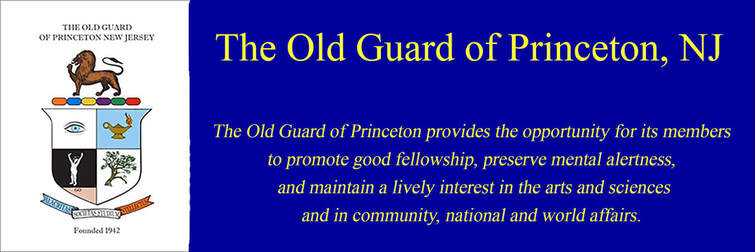March 17, 2010
Developing Trends in BioPharmaceuticals Including Alzheimer’s Disease
Eric Hagestad
Bristol-Myers Squibb
Minutes of the 24th Meeting of the 68th Year
Pres. Geo Hansen opened the 24th meeting of the 68th year on 3/17/10. Minutes were presented by Julia Coale. Mike Fernandez introduced a guest, John Hines and Nick VanDyck his guest, wife Marcia. Jack Reilly recognized 5 new Emeritus members.
Dick Hanson introduced the morning's speaker, Eric Hagestad Executive Director Strategic transactions at Bristol-Myers Squibb. This means that he is responsible for identification and evaluation of licensing and M&A opportunities in areas including neurosciences. His excellent presentation lead us thru the science the developmental research experience, the societal impact, the outlook for progress against Alzheimer's Disease. First, though, I should note that his background includes a BA in Biology from UCLA, a PhD. in physiology and Biophysics from Harvard Medical School, a post-doc fellowship at Harvard.
Alzheimers is defined as a degenerative disease of the brain that results in dementia. Memory loss is often the 1st symptom. Behavioral assessments and cognitive tests can help confirm the diagnosis, with brain scans like MRI's helping by ruling out other causes. Brain scan color images dramatically demonstrate the deterioration and shrinkage in specific regions of the brain as patients progress from mild cognitive impairment to Alzheimer's disease.
Following memory loss, later symptoms include confusion, irritability and aggression, language breakdown, and general withdrawal, eventually basic physical functions (walking and swallowing), ultimately death, typically within 4 to 6 years. An adult brain contains 100 billion nerve cells, neurons. Branches connect at more than 100 trillion points. Signals travel thru this neuron forest as tiny electrical charges, forming the basis of memories, thoughts, and feelings. Alzheimer's disease disrupts the way electrical charges travel within cells, Scientists well understand this, but causality has not yet been established. Until it is, breakthrough development will not begin to occur.
Alzheimer's Disease is not a normal part of aging: but age is the greatest risk factor. Longer life expectancies have and will lead to a rapid increase in incidence in developed countries (Europe, Japan. U.S). Death from Alzheimers has increased 50% in the last 10 years, while declining for other major diseases. (Heart,cancer--) In developed countries the cost of caring for Alzheimer's patients will be extremely high! While not the major cost factor, the drugs atone will cost more to make. (Biologic medicines are grown inside living calls rather than put together chemically as are conventional drugs.)
Bristol Myers-squibb is one of three big Pharma companies and one of probably 40 or 50 Bio-Tech firms, plus some universities doing work on Alzheimer's. The FDA has approved 5 drugs to treat Alzheimer's For some, these may afford help to maintain cognitive abilities or control certain behavioral symptoms for a few months to a few years. They work by regulating neurotransmitters that send messages between neurons.
They may help maintain thinking, memory, and speaking skills and with certain behavioral problems. But they won't slow or stop or reverse the disease. Definitive progress on that goal is in the future.
Respectfully,
Jim Johnson
Dick Hanson introduced the morning's speaker, Eric Hagestad Executive Director Strategic transactions at Bristol-Myers Squibb. This means that he is responsible for identification and evaluation of licensing and M&A opportunities in areas including neurosciences. His excellent presentation lead us thru the science the developmental research experience, the societal impact, the outlook for progress against Alzheimer's Disease. First, though, I should note that his background includes a BA in Biology from UCLA, a PhD. in physiology and Biophysics from Harvard Medical School, a post-doc fellowship at Harvard.
Alzheimers is defined as a degenerative disease of the brain that results in dementia. Memory loss is often the 1st symptom. Behavioral assessments and cognitive tests can help confirm the diagnosis, with brain scans like MRI's helping by ruling out other causes. Brain scan color images dramatically demonstrate the deterioration and shrinkage in specific regions of the brain as patients progress from mild cognitive impairment to Alzheimer's disease.
Following memory loss, later symptoms include confusion, irritability and aggression, language breakdown, and general withdrawal, eventually basic physical functions (walking and swallowing), ultimately death, typically within 4 to 6 years. An adult brain contains 100 billion nerve cells, neurons. Branches connect at more than 100 trillion points. Signals travel thru this neuron forest as tiny electrical charges, forming the basis of memories, thoughts, and feelings. Alzheimer's disease disrupts the way electrical charges travel within cells, Scientists well understand this, but causality has not yet been established. Until it is, breakthrough development will not begin to occur.
Alzheimer's Disease is not a normal part of aging: but age is the greatest risk factor. Longer life expectancies have and will lead to a rapid increase in incidence in developed countries (Europe, Japan. U.S). Death from Alzheimers has increased 50% in the last 10 years, while declining for other major diseases. (Heart,cancer--) In developed countries the cost of caring for Alzheimer's patients will be extremely high! While not the major cost factor, the drugs atone will cost more to make. (Biologic medicines are grown inside living calls rather than put together chemically as are conventional drugs.)
Bristol Myers-squibb is one of three big Pharma companies and one of probably 40 or 50 Bio-Tech firms, plus some universities doing work on Alzheimer's. The FDA has approved 5 drugs to treat Alzheimer's For some, these may afford help to maintain cognitive abilities or control certain behavioral symptoms for a few months to a few years. They work by regulating neurotransmitters that send messages between neurons.
They may help maintain thinking, memory, and speaking skills and with certain behavioral problems. But they won't slow or stop or reverse the disease. Definitive progress on that goal is in the future.
Respectfully,
Jim Johnson
